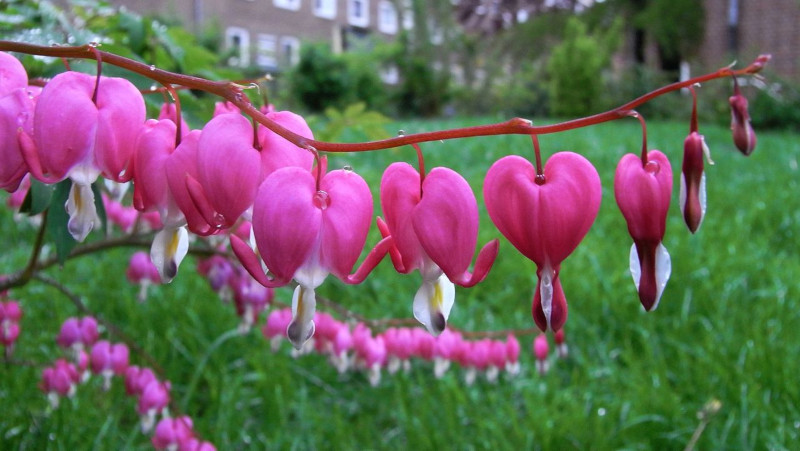Bleeding Heart Facts
- Justifiably, the term Bleeding Heart serves as the attention-grabbing common name for a truly beautiful species of flowering plant. Its scientific name, though, remains the somewhat difficult to pronounce Lamprocapnos spectabilis.
- But the gorgeous plant also goes by variations of the common name. The most used of these remains the Asian bleeding-heart. Perhaps to the surprise of many of those who appreciate its great beauty, this marvelous plant also conceals a secret.
- That’s the fact that it’s a member of the poppy family. Because of its appearance, this plant has a high value in gardens and also in the floral industry. This holds true due to the delicate heart-shaped pink and white flowers it usually produces.
- The breathtaking Bleeding Heart quickly became spread to many parts of the globe. In fact, it made its first appearance in Europe in the 1840’s. Partly due to this artificial dispersal, the species appears to be stable and in abundance.
- The IUCN therefore currently has no listing for the plant on its Red List of Threatened Species. It could nevertheless be considered to be facing several potential dangers. The worst of these is likely the threat of climate change, as other species.
Related Articles
Bleeding Heart Physical Description
Among its numerous other characteristics, the Bleeding Heart also attains a respectable size. That’s due to the fact that the plant typically attains a height of around 47 in (120 cm). Plus, the average width of the plant generally averages a total of about 18 in (45 cm).
Regardless of its other marvels, however, the fantastic plant in fact shares many of the basic traits of related species. For one, this visually distinctive species also evolved into a herbaceous perennial. The delicate leaves further possess three lobes only.
The stems of the beautiful perennial, meanwhile, most commonly appear as either light green or pinkish in color. Each of the hanging stems of the Bleeding Heart produces as many as 20 blooms. These appear from early Spring through Summer.
Not to be outdone, the outer petals of the delicate bloom display a bright pink to light red color. However, the inner petals generally a bright show white. As the name implies, the flowers themselves form in the conventionalized shape of a heart.
- Kingdom: Plantae
- Phylum: Tracheophytes
- Class: Angiosperms
- Order: Ranunculales
- Family: Papaveraceae
- Genus: Lamprocapnos
- Species: L. spectabilis
Bleeding Heart Distribution, Habitat, and Ecology
Though it now appears throughout the world, the Bleeding Heart evolved as endemic to a specific portion of the globe. That consisted solely of the continent of Asia. Specifically, the species appears naturally in portions of Siberia, northern China, Korea, and Japan.
In its natural range, the plant appears in the wild only in certain regions. These consist of areas of open forest with medium shade. These regions must also provide it with sufficient protection from the wind. But, in cultivation, it has proven itself to be adaptable.
The stunning plant known as the Bleeding Heart additionally plays an important role within its native range. That holds true because a wide variety of insects routinely feed on the leaves. Understandably, this sometimes makes the plant difficult to cultivate.
Creatures such as snails, slugs, and aphids appear to be the most common among these threats. The species also produces its seeds within long, relatively thin pods. During the Summer, the remarkable plant typically dies back, leaving only the root system.
Finally, it did manage to evolve a method of self-defense. That’s because the leaves and stem of the plant contain a variety of alkaloids. But, these are not considered dangerous. Contact with the plant generally produces only mild skin irritations.
Species Sharing Its Range
Check out our other articles on 6 Extremely Localized Invertebrates, Greater Sage Grouse, Mou Waho Island, Naked Man Orchid, New Zealand Giraffe Weevil, Vietnamese Mossy Frog

